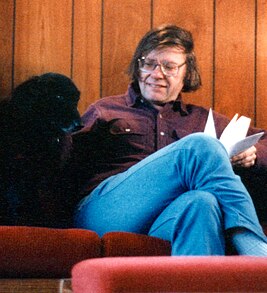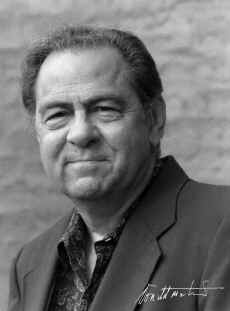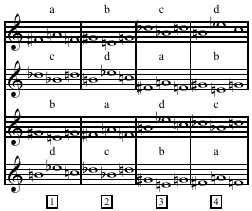
Pizzicato is a playing technique that involves plucking the strings of a string instrument. The exact technique varies somewhat depending on the type of instrument :

Milton Byron Babbitt was an American composer, music theorist, mathematician, and teacher. He is particularly noted for his serial and electronic music.

Benjamin Aaron Boretz is an American composer and music theorist.
Mario Davidovsky was an Argentine-American composer. Born in Argentina, he emigrated in 1960 to the United States, where he lived for the remainder of his life. He is best known for his series of compositions called Synchronisms, which in live performance incorporate both acoustic instruments and electroacoustic sounds played from a tape.

Donald James Martino was a Pulitzer Prize winning American composer.

The Fine Arts Quartet is a chamber music ensemble founded in Chicago, United States in 1946 by Leonard Sorkin and George Sopkin. The Quartet has recorded over 200 works and has toured internationally for 76 years, making it one of the longest enduring major string quartets. In its history, the Quartet has had two leaders: Leonard Sorkin, from 1946 to 1981, and Ralph Evans, from 1982 to the present. Its current members are violinists Ralph Evans and Efim Boico, violist Gil Sharon, and cellist Niklas Schmidt.
Richard G. Swift was an American composer and music theorist.

Composition for Four Instruments (1948) is an early serial music composition written by American composer Milton Babbitt. It is Babbitt's first published ensemble work, following shortly after his Three Compositions for Piano (1947). In both these pieces, Babbitt expands upon the methods of twelve-tone composition developed by Arnold Schoenberg. He is notably innovative for his application of serial techniques to rhythm. Composition for Four Instruments is considered one of the early examples of “totally serialized” music. It is remarkable for a strong sense of integration and concentration on its particular premises—qualities that caused Elliott Carter, upon first hearing it in 1951, to persuade New Music Edition to publish it.
The Group for Contemporary Music is an American chamber ensemble dedicated to the performance of contemporary classical music. It was founded in New York City in 1962 by Joel Krosnick, Harvey Sollberger and Charles Wuorinen and gave its first concert on October 22, 1962 in Columbia University's MacMillin Theatre. Krosnik left the ensemble in 1963. It was the first contemporary music ensemble based at a university and run by composers.
Paul Zukofsky was an American violinist and conductor known for his work in the field of contemporary classical music.
George Sopkin was an American cellist who was a founding member of the Fine Arts Quartet and faculty member at Kneisel Hall School of Chamber Music in Blue Hill, Maine.

Elaine Barkin née Radoff is an American composer, writer, and educator.
String Quartet No. 2 (1954) is the second of six string quartets by the American composer Milton Babbitt.
String Quartet No. 4 is the fourth of six chamber music works in the string quartet medium by the American composer Milton Babbitt.
String Quartet No. 5 is the fifth of six chamber music works in the string quartet medium by the American composer Milton Babbitt.
String Quartet No. 6 is the last of six chamber-music works in the string quartet medium by the American composer Milton Babbitt.
All Set, for jazz ensemble, is a 1957 composition for small jazz band by the American composer Milton Babbitt.
Robert Miller was an American pianist and attorney.
Bernard Zaslav was an American viola soloist and chamber musician with an extensive recording and performance career. A founding member of The Composers Quartet in 1965, he went on to play with the Fine Arts Quartet, Vermeer Quartet, and the Stanford String Quartet. He has also performed and recorded as the Zaslav Duo with his wife, pianist Naomi Zaslav.
Edgar Warren Williams is an American composer, conductor, and music theorist.
![]() = ca. 72), subdivision of the basic unit into 2, 3, 4, 5, 6, 7, 8, and 12 subunits produces eight "subtempos", each of which defines a subsection of each rhythmic section. A time-point set analogous to the pitch-class set is projected in association with eight dynamic levels (from ppp to fff), each of which articulates a particular layer of the time-point structure throughout the composition. [1] [4]
= ca. 72), subdivision of the basic unit into 2, 3, 4, 5, 6, 7, 8, and 12 subunits produces eight "subtempos", each of which defines a subsection of each rhythmic section. A time-point set analogous to the pitch-class set is projected in association with eight dynamic levels (from ppp to fff), each of which articulates a particular layer of the time-point structure throughout the composition. [1] [4] 





